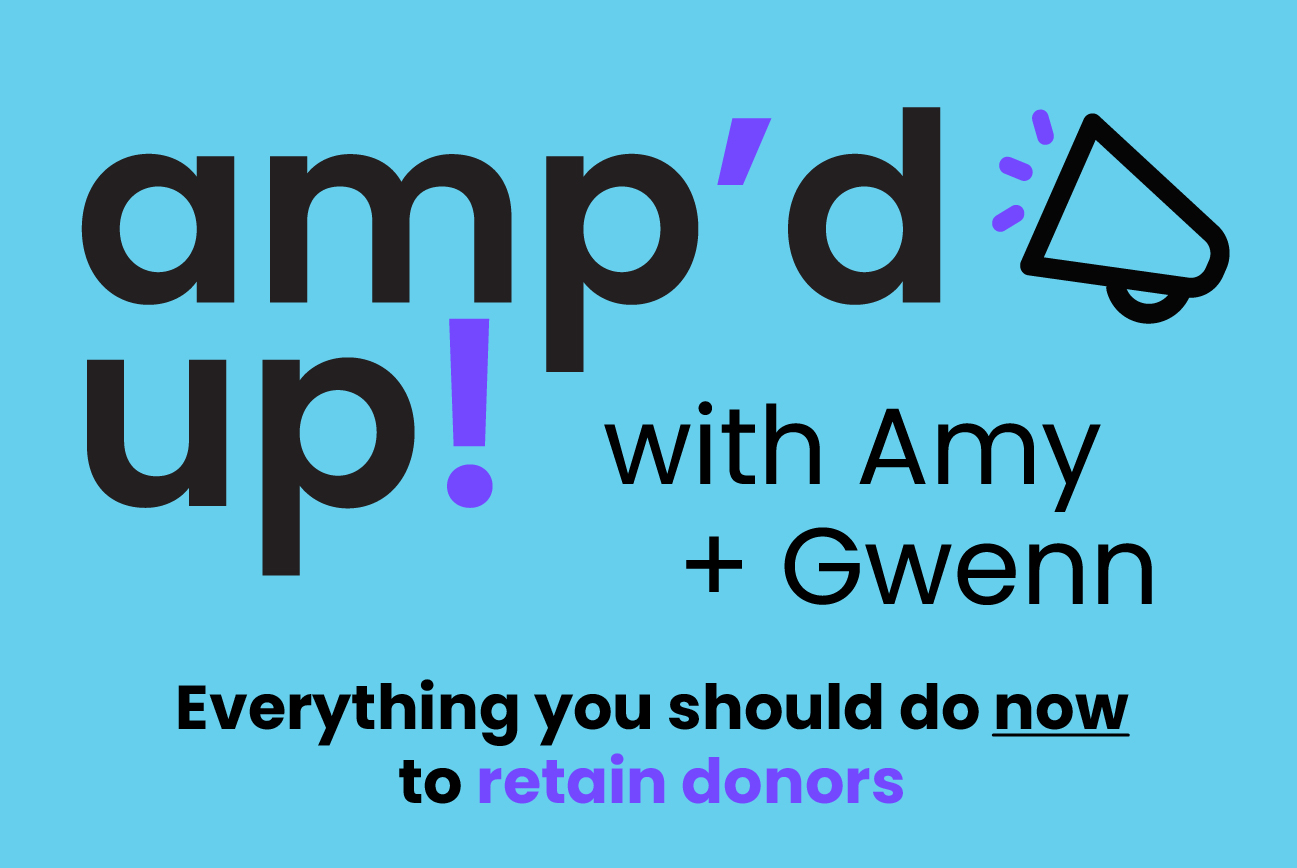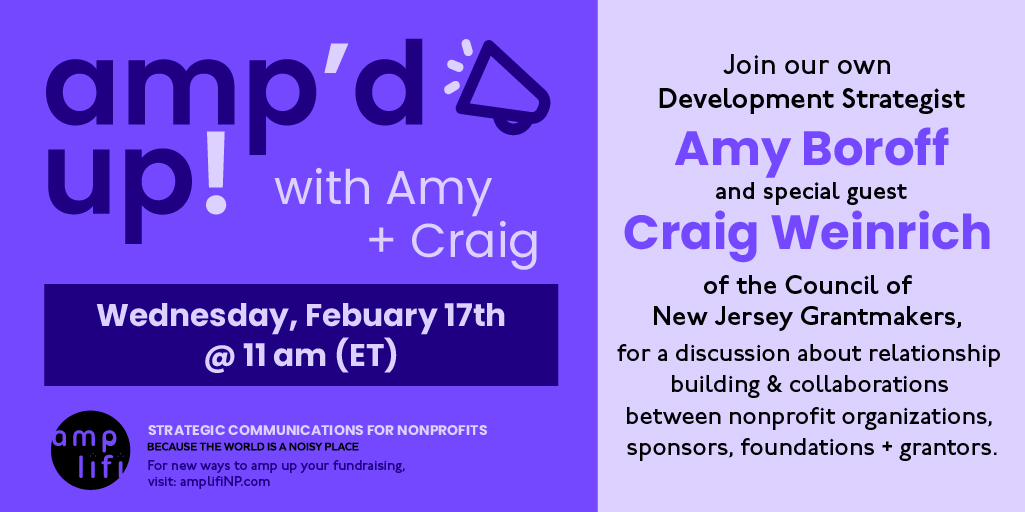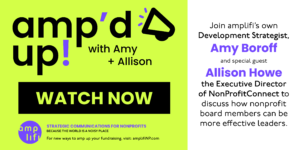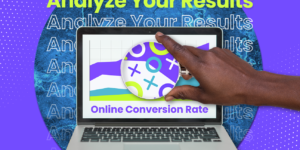We know you thanked every donor who gave during your year-end fundraising push. However, if your stewardship strategy was one and done, you’re going to have a hard time trying to retain donors.
Donor retention is top of mind for fundraising professionals during the early months of a new year. Or at least it should be.
Did you know every 100 donors gained were offset by 105 lost donors through attrition, according to the Fundraising Effectiveness Project’s 2019 report?
You can do more for your mission by making sure donors who gave at year-end stick around and give again, rather than acquiring new ones. And this will be especially important in 2021, as we continue adjusting our strategies during the pandemic.
That’s why our latest webinar, “amp’d up with Amy + Gwenn” focused on strategies to retain your year-end donors. So, let’s review some important takeaways that came from your peers’ questions during the discussion!
Here’s what amplifi Development Strategist, Amy Boroff, and Cornerstone Family Programs & Morristown Neighborhood House Director of Development, Gwenn Heller-DellaPelle, had to say.
READ MORE: 5 Key Data Points to Evaluate Your Year-End Appeal
“Why do donors lapse?”
“Donors tend to keep giving when they believe the nonprofit is effective,” Gwenn said. “They receive the thank you, they feel important, they feel needed. And that’s what you need to show in your thank you.”
But saying thank you after a donor gives is just the beginning. Gwenn went on to say “you need to be a staple in their lives.” This means keeping donors engaged with your organization and continually reminding them of the impact their support has on your goals.
“Let’s talk about that why. People want to donate to the services you are providing,” Amy elaborated. “A thank you is such an important thing, but I think we can use that to really show and tell a little bit deeper of a story.”
After all, 80 percent of respondents felt it was important to know the real outcomes of their donations or volunteer work with a nonprofit in an Accenture study. This is key if you want to retain donors.
So, use your thank you as an opportunity to be more donor-centric. Let donors know you value their role in making your mission a reality. And show them exactly how their donations made an impact during the year.
READ MORE: 5 Ways to Show the Impact of Every Donation
“What are some examples of non-ask communications (topics) that have worked for you?”
There’s no shortage of ways for nonprofits to engage donors with non-ask communications. And innovative fundraisers are coming up with even more creative ways to reach out to donors every day.
Gwenn handled this question and explained how her organization used a short video featuring their CEO to update donors about their impact of their past donations. And of course, to say thank you!
“She got on there and it was great,” Gwenn said. “It was a real quick 30, 40 second video just to say this is what we’ve been doing and thank you for all of your past support. That’s incredibly important.”
CFP&MNH sent the video to their donors via email prior to their year-end appeals. It was a thoughtful way to re-engage donors without an ask, thank them for their impact, and prep them to give again.
Amy pointed out how using the video to lead into the year-end was a great example of how to go surround sound with your communications strategy.
“Before you send out your appeal, to your point, first you are going to send out that email. A thank you, non-ask email,” Amy said. “Then, at your year-end, you’re going to send them an email with an ask. And then you send them your direct mail piece with an ask. And it’s all synchronized.”
Try some of these ideas to go surround sound with your stewardship strategy and retain donors:
- Donor surveys.
- New donor welcome kit.
- Impact report/video.
- Phone calls.
- Personal thank you notes.
- Past event photo packages.
READ MORE: Maintaining Relationships with Non-Ask Communications
“Do you think personalizing the letters or envelopes with handwritten notes makes an actual difference?”
“Absolutely!” Gwenn exclaimed in response. “There are a lot of people that stand over their garbage can in November and December with all of those asks. If they see someone actually hand-wrote something on it, you’re going to get them to open it. And that’s first and foremost what you need when you’re sending out an ask.”
But personalization doesn’t have to stop there! In fact, you can take the personalized approach as far as your data and creativity will allow. And to Gwenn’s point, the more you show a supporter you took the time to acknowledge them personally, the more likely they are to engage. And the more likely you are to retain donors!
So, remind donors of their last gift amount when you make another ask. Mention how long they’ve been giving to your organization or acknowledge their status as a member if that applies for you.
Challenge yourself to think of ways you can personalize your outreach beyond using a donor’s name on an outer envelope, reply card, or email subject.
If your data is in order, you can go further by using audience segments to connect with specific groups of donors more personally. Break down your audience into segments like lapsed donors, current donors, volunteers, and past event attendees. Then, adjust your message to speak with each of these groups more directly!









